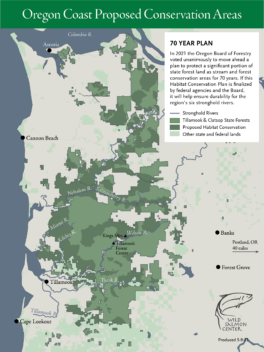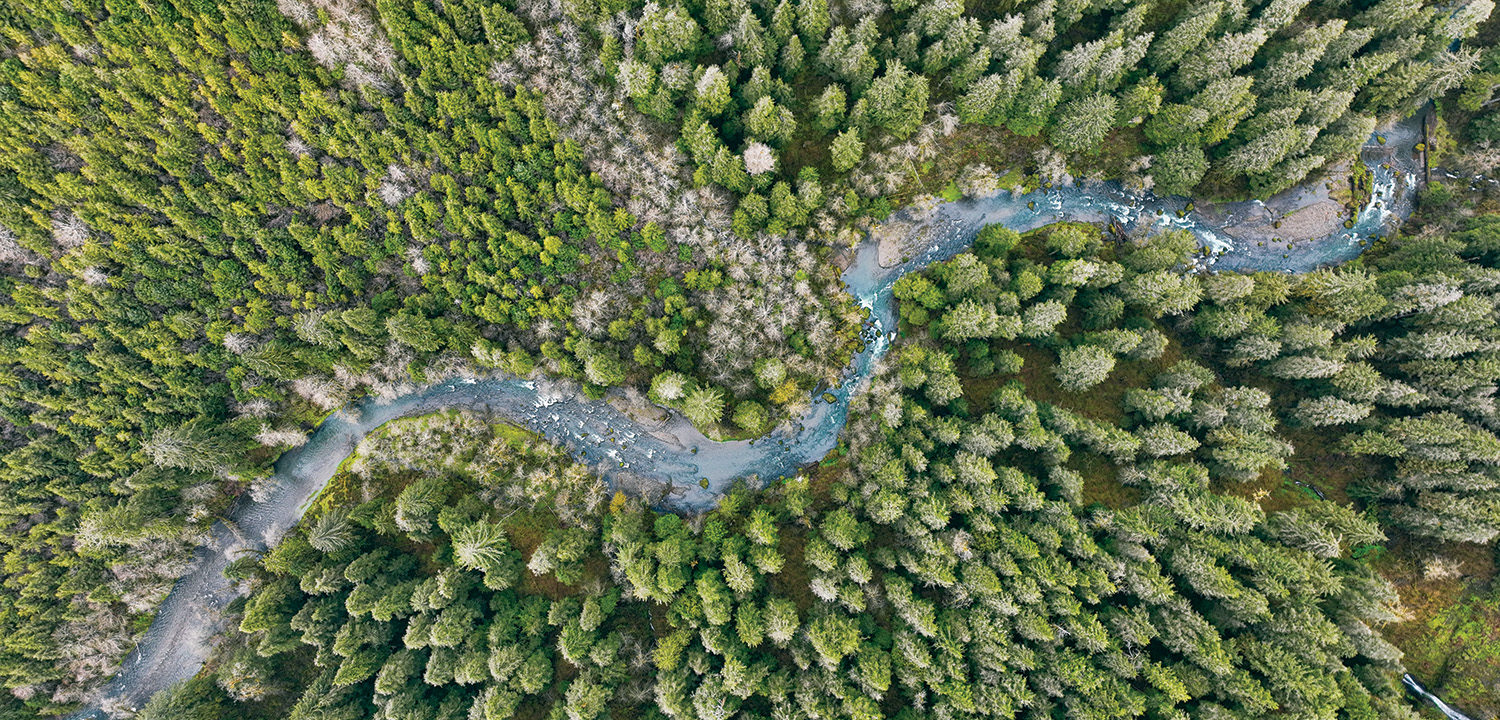Providing a durable legacy for Oregonians
The Tillamook Rainforest includes 518,000 acres of state land in Clatsop and Tillamook counties, between greater Portland and the Pacific Ocean. Six rivers here in the Nehalem and Tillamook Bay systems—the Trask, Wilson, Kilchis, Miami, Nehalem, and Salmonberry—host extraordinary runs of wild fall Chinook and winter steelhead, as well as spring Chinook, coho, chum, and rainbow and sea-run cutthroat trout.
These forests and their rivers also provide clean drinking water for 500,000 Oregonians and offer flood protection, carbon sequestration, and climate regulation. They are also popular recreation sites for hiking, fishing, camping, hunting, biking, horseback riding, mushroom gathering, and ATV trails. Outdoor recreation in the Tillamook powers a $550 million recreation economy on the North Coast that employs more than 10,500 people.

The state Board of Forestry voted unanimously in 2021 to advance a balanced plan to protect roughly half of the Tillamook—250,000 acres—in stream and forest reserves for 70 years. In March of 2024, the Oregon Board of Forestry successfully voted to advance the a plan, clearing the path for it to now move on to final federal review with a decision expected by early 2025.
Unfortunately, a group of timber interests and politicians they fund is refusing to join this balanced forest management approach — which would include healthy, sustainable timber harvests. This group has spearheaded an effort in recent months to delay, derail, and outright stop the plan, including appealing to legislators and the governor in Salem.
Wild Salmon Center is joining together with citizens, business owners and conservation groups up and down the coast and across Oregon who overwhelmingly support fish and wildlife habitat, clean water, and recreation on our state public lands. Over the coming year, we will be speaking up loudly and clearly in favor of a forward-looking conservation plan for the Tillamook Rainforest. Please join us!
If this habitat conservation plan is finalized, it will be a critical piece of the puzzle to ensure the region’s rivers become one the most important long-term strongholds for wild salmon and steelhead remaining along the Pacific Rim.
In decades to come, as our region wrestles with the impacts of population growth, climate change, commercial logging, pollution, and urban development, the Tillamook conservation areas created under this plan will serve as oases for salmon and people.

